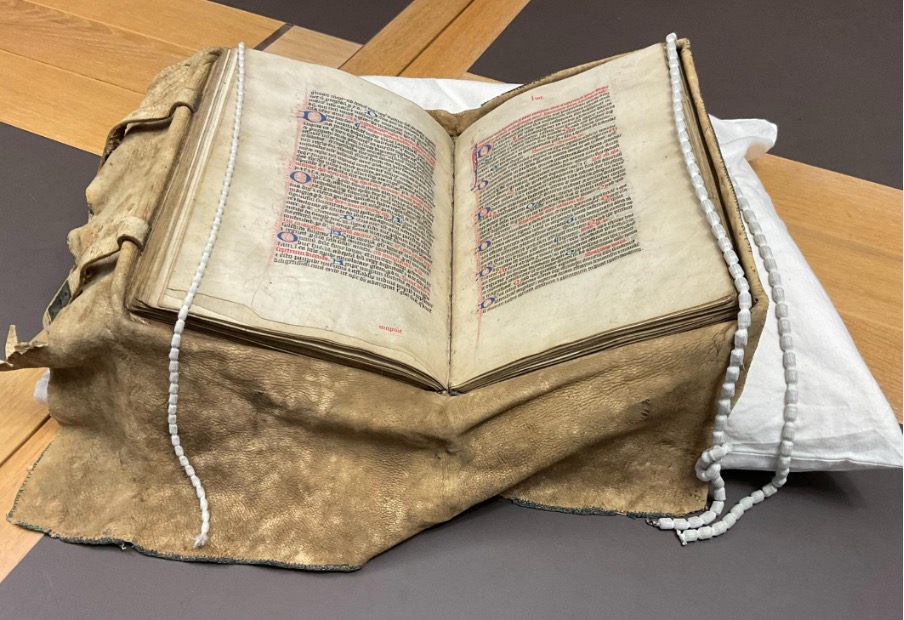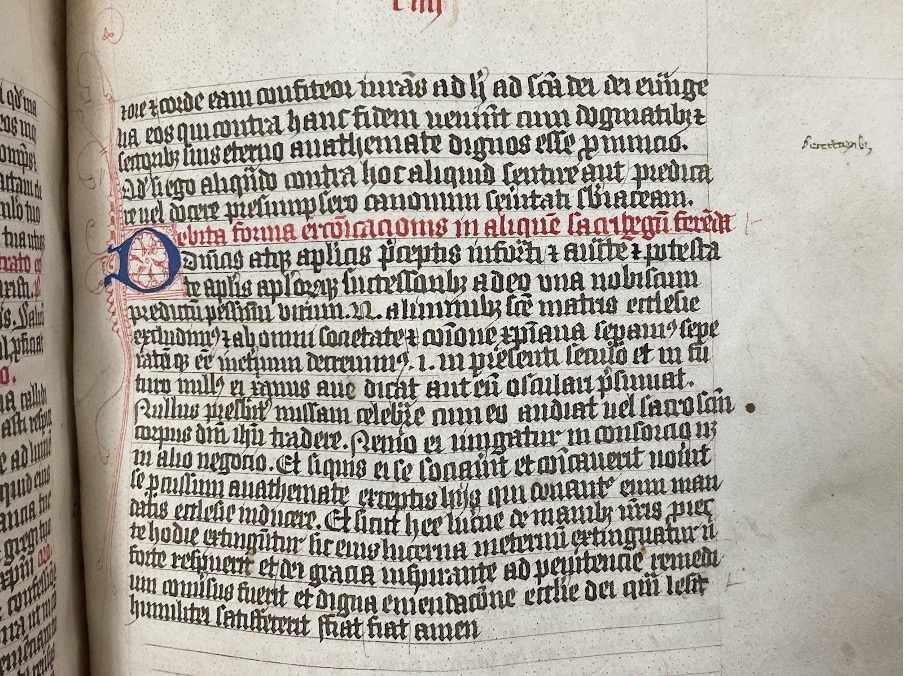
Posted by Sarah Hamilton
13 May 2024This year, thanks to funding from Exeter’s Education Incubator fund, 8 final-year students have been co-researching, with Sarah Hamilton and Stuart Pracy (in Archaeology and History) and Ellie Jones and Emma Laws (Exeter Cathedral’s Archivist and Librarian), one of the manuscripts in Exeter Cathedral Library. The aim of the project was to pilot a new, hands-on approach to training in manuscript studies. The students worked together to research and update the catalogue entry for this manuscript. In this, the first of two posts to be published on the Centre for Medieval Studies blog, they introduce the manuscript.
Bishop Edmund Lacy’s Pontifical has been in the Exeter Cathedral Library and Archives since the Bishop’s death in 1455. Its shelfmark is MS 3513.
A Pontifical is a liturgical book, containing rites which can only be ministered by bishops. Inside, the rites are written in a combination of black and red (and occasionally purple) ink, with floral blue initials and red swirls in the margins.
It is still wrapped in its original white leather chemise to protect the book.

Under the white leader chemise, there is a red leather binding that surrounds the wood panels. Originally there were two straps and clasps, sadly we now only have one of the pin fastenings on the back of the manuscript.
The folios (or pages) are made out of untanned animal skin.
If you look closely enough, sometimes you can see which side of the folio still has some hair!

Coming into this project we thought of medieval manuscripts as pristine documents of neat, filed lines of text, but from looking at the Pontifical it emerged how personalised texts were. In this example you can see the scribe missed out the first letters of the word and had to go back and add them in the margin with a little symbol to position the missing text. It shows that these aren’t absolutely pristine documents – the author makes mistakes, they are human!

Read our next blog for the tips we’ve learnt for reading medieval manuscripts.
Ella Carroll, Laura Dicker, Hannah Fraser, Tom Hitchin, Bethan James, Anna Lochhead, Elle Norrish, and Sofia ali-Shah
2 responses to “Meeting a medieval manuscript”
[…] The students worked together to research and update the catalogue entry for this manuscript. Last week’s post shared their experiences of meeting the manuscript, MS 3513, for the first time; this week, they […]
[…] MEETING A MEDIEVAL MANUSCRIPT > […]